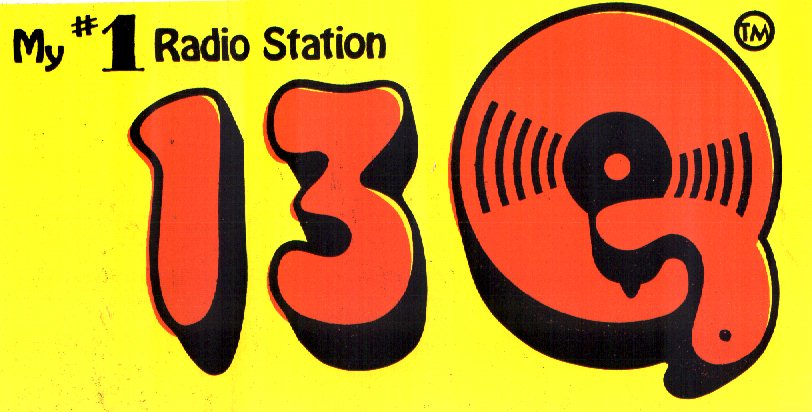 vs
vs
 vs
vs
| Pittsburgh stealer:
How Heftel hopes to shake up top 40 WKPQ, the newcomer in
town,
Enter WKPQ (AM); exit a relatively
complacent top-40 scene in Pittsburgh. The horse race in mid-March when
Cecil Heftel put his newly purchased station on a contemporary format in
direct competition with ABC-owned KQV(AM) for what now amounts to 20% of
the listeners that tune in top-40 radio in the nation's 10th largest market.
|
Many radio people in the Pittsburgh market privately say that WKPQ will
never be able to retain it's eight commercial minutes policy. "KDKA's open
rate is $106 a minute and they don't really sell them at that rate," one
Pittsburgh radio veteran said. "And if you make the station hard to buy,
then they'll just buy around it."
What of KQV? "Pittsburgh radio has gone a long time without any changes," Bob Harper, program director of KQV says, "But the whole market has changed now, all in the last seven months." Besides the Heftel entrance into the market, he points to KDKA's music policy change last summer with the arrival of Alan Mitchell as program director of the station. "They're playing just about the same records as we are." Mr. Harper says. "And WTAE(AM) has been sounding a lot younger as well." KQV has also had to deal with a station that has been taking part of it's audience in the last year that's under the same roof as KQV. That is WDVE(FM) Pittsburgh, the ABC-owned rock FM. WDVE has come dangerously close to surpassing KQV at night. But Dwight Douglas, the programer under whose direction WDVE did so well, has gone to newly turned progressive WYDD(FM) Pittsburgh. And Bob Harper is free to admit, "I'm happy that there's a second FM rocker here now." With stations old and new after it's audience, KQV also had to deal with the fact that WKPQ hired away it's general sales manager, Gary Popkin, and two other salesman before it even went on the air. Mr. Popkin was quickly replaced by Dick Benzon, who was shifted down from his sales manager position at ABC's WXYZ(AM) Detroit, while the other two salesmen were "easily replaced" as well. KQV cannot be expected to stand still among all this market activity. When the sale of WJAS was to Mr. Heftel was announced, KQV picked up WJAS's Perry Marshall to do midday two-way talk. His People Poll is now the only midday two-way talk in Pittsburgh, according to Harper. (KDKA is all talk from 6 p.m. to 6 a.m. and music the rest of the day, except a one-hour news block at 5 p.m.) Bob Harper does not place an inordinate amount of emphasis on the talk segment in his fight with WKPQ. "As a music radio station, the other things are worked in to enhance the sound. But it's not paramount; it's icing," he says Perry Marshall airs only about 10 calls a day, which are taped from a larger number of callers the day before and edited. "It's still basically music," Mr. Harper adds. But if KQV is not standing still in the face of rating battle, neither can it be expected to change radically to combat the challenge. "Listeners sense when one radio station is watching another," Mr. Harper believes. "and that can hurt you." In an interview several months ago, ABC's director of program development, Bob Henaberry, stated ABC's policy said succinctly: "Competition is good, it's American. You can't adjust your programing on a day-to-day basis to keep up with competition. Not even on a week-to-week, or month-to-month basis ... You have to establish what you should do in a market and then do it better than anyone else. But after that, you have to ride with it." And that is what KQV can be expected to do, ride with it. It is, and has been, in competition with WTAE and WWSW(AM) Pittsburgh for the precious number-two spot in Pittsburgh and will probably remain with the basic format that has taken it that high. "WDVE has a demeanor on the air that says something about the radio station," Bob Harper says. "It says FM rock. The high energy of '13-Q' says something too. And our demeanor says we are a controlled top 40, which we are. There's an attitudinal difference between the 19-year-old that listens to them and the 19-year-old that listens to us, I think. But it's too early too tell who will get what. What about that older audience that WJAS had? Where are they going to go" We just haven't seen any definitive research yet." The American Research Bureau diaries went into the Pittsburgh market last Thursday (April 12) for the spring sweeps. The spring books in Pittsburgh have traditionally belonged to KDKA because of the beginning of the baseball season. KDKA's share in the spring book has been know to go as high as 40% and rarely lower than 33%. Together, KQV and WDVE share more than half of Pittsburgh's nighttime teen audience, in an average of 1972 ARB's. That, WKPQ says, speaks of a lack of choice in the market. This spring's ratings may tell at least the beginning of the story of whether Pittsburgh is in for a change. |